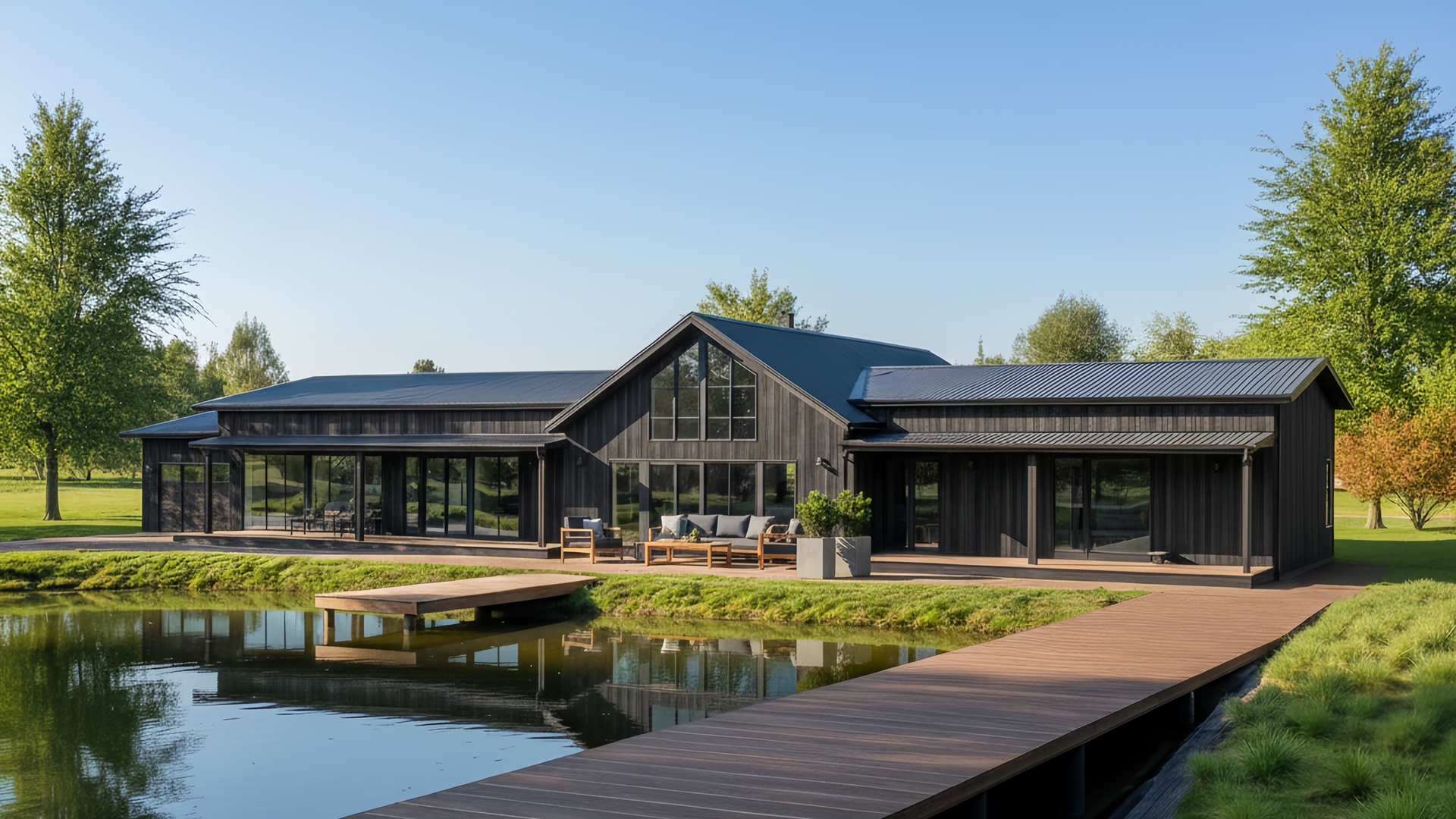Sunken living rooms were a popular feature in mid-century homes. Now the ‘nest-like’ spaces are featuring in science fiction and offering a solution to tech-reliant living.
When Georgina Wilson watched Marvel’s new Fantastic Four film last month, the standout feature wasn’t Pedro Pascal’s deadpan humour or Vanessa Kirby’s platinum waves, but the giant round conversation pit in the middle of the protagonists’ living room. The sunken, carpeted seating area takes centre stage in the Richards family’s New York penthouse. The huge blue relaxation area, reminiscent of Don Draper’s loft in Mad Men, sets the film firmly in the space age.
To Wilson, an award-winning architect based in Sydney, the pit felt like a nod to homes she grew up visiting in the 1970s. Recessed living rooms or “sofa pits” were a popular interior feature in mid-century homes. Striking step-down dens with built-in seating not only encouraged deeper conversation through a feeling of separation from the rest of the house, they often became a topic in their own right. Even if half the chatter was quips about guests accidentally falling in.
The trend fizzled out, in part thanks to the pits’ trip hazards. But half a century on, design professionals suggest Marvel aren’t the only ones tapping into a sunken room revival. The Alien franchise just featured a conversation pit in its TV series Alien: Earth, and searches for mid-century furniture are up 319%, according to Yelp’s 2025 home, beauty and wellness report, with curved features like conversation pits up 124%.
Wilson and her colleagues say they’ve been noticing a rise in requests for chic, maximalist pits. A client in northern Sydney recently requested a circular lounge arrangement to create more intimacy when entertaining. Another in the city’s inner east asked for a banquette-style dining area that wraps around a table to encourage conversation. At this year’s Houses awards, which celebrate Australian residential architecture, two shortlisted properties featured sunken lounge areas.
“It creates this sense of being enveloped by something; this cocoon-type environment you feel nestled in,” says Rob Kennon, the architect behind one of the properties on the shortlist, Terrace House Project in Melbourne’s Fitzroy. Clients say the space is conducive to playing games like Uno or Lego because “you’re more connected to the floor”.
Luke Fryer, whose company Longhorn is in the middle of bringing American ranch-style residences to Australia, says conversation pits – along with podcast studios and whisky rooms – are the most popular special features requested by his clients. “It’s incredible how many people have fond memories of sunken lounge rooms growing up,” he says, crediting shows like Yellowstone for the popularity of large barn-style homes, where pits fit easily.
Andrew Leach, a professor of architectural history at the University of Sydney, suggests the resurgence goes beyond pop culture and the general design trend cycle. He thinks a decline in traditional TV-watching plays a role. “Having traded familial viewing on a big screen for … dispersed attention across the family, the conversation pit makes more sense again as a domestic device,” he says.
Jo Hayes, a lifestyle consultant, agrees that technology has played a part in this modern desire to go deep. In her view, it’s about making space to come together in an otherwise atomised time. “We’re swamped with a tidal wave of tech, screens and artificial-everything on a daily basis – it’s no wonder we’re craving authenticity,” she says. “Having a space specifically designated for this purpose of connecting is supremely powerful.”
Kasra Farahani, the production designer for The Fantastic Four: First Steps, had a similar goal for the pit in the movie, saying he wanted it to be “nest-like … soft and warm and separated from everything outside of its perimeter”.
Anton Trees and his wife, Annie Gifford, can speak to this power first-hand. One of the key features that attracted them to the 1965 home they bought in Albury, New South Wales, several years ago was the stylish sunken living room. The pit has become so central to their living experience, they’d consider installing one in a future home.
“It has a notably different energy,” Trees says of the cushioned seating area, which is knee-height and accessed via a set of steps. “The conversation naturally becomes deeper and more immersive as you move into the pit. There has to be some sort of metaphorical resonance about the act of walking down steps into a partitioned zone specifically designed for talking.”
The couple welcomed a daughter four years ago, and were naturally concerned about her falling in. Did they need to child-proof the pit? Were friends correct in claiming children quickly learn to adapt? The latter was true, reassuringly. Their daughter has an unbroken record of not falling in – unlike some of their adult guests. Trees still regularly recounts the time his friend Gary preempted his own plight by asking whether anyone had fallen into the pit, then tumbling in on his way to the bathroom at 2am (he escaped uninjured). Wilson laughs, remembering her friends’ frequent falls in the 1970s. “It was deadly, but unforgettable,” she says.
Trees and his wife were lucky that their home already came with a pit. But how practical is installing one? “It’s a nightmare for builders because you have to do a lot with the floor levels,” says Andy Nicholson, Alien: Earth’s production designer. Hayes warns that, budget aside, the renovation could quickly date your home when pits inevitably fall out of fashion again.
Read full The Guardian article here: https://bit.ly/4gZCuzb

.png)




.png)

.png)





%201%20(1).svg)
%201.svg)
%20(1).png)
